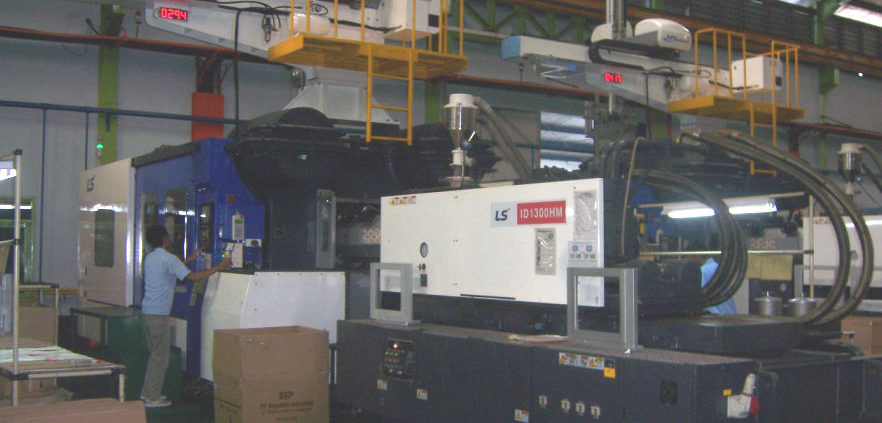Types of injection molding machines
Machines are classified primarily by the type of driving systems they use: hydraulic, mechanical, electrical, or hybrid.
Hydraulic
Hydraulic presses have historically been the only option available to molders until Nissei Plastic Industrial Co., LTD introduced the first all-electric injection molding machine in 1983. Hydraulic machines, although not nearly as precise, are the predominant type in most of the world, with the exception of Japan.
Mechanical
Mechanical type machines use the toggle system for building up tonnage on the clamp side of the machine. Tonnage is required on all machines so that the clamp side of the machine does not open (i.e. tool half mounted on the platen) due to the injection pressure. If the tool half opens up it will create flash in the plastic product.
Electric
The electric press, also known as Electric Machine Technology (EMT), reduces operation costs by cutting energy consumption and also addresses some of the environmental concerns surrounding the hydraulic press. Electric presses have been shown to be quieter, faster, and have a higher accuracy, however the machines are more expensive.
Pneumatic
Pneumatic type machines use the air pressure for building up the tonnage on the clamp side of the machine.
Hybrid injection (sometimes referred to as “Servo-Hydraulic”) molding machines claim to take advantage of the best features of both hydraulic and electric systems, but in actuality use almost the same amount of electricity to operate as an electric injection molding machine depending on the manufacturer
A robotic arm is often used to remove the molded components; either by side or top entry, but it is more common for parts to drop out of the mold, through a chute and into a container..




Leave a Reply
Want to join the discussion?Feel free to contribute!